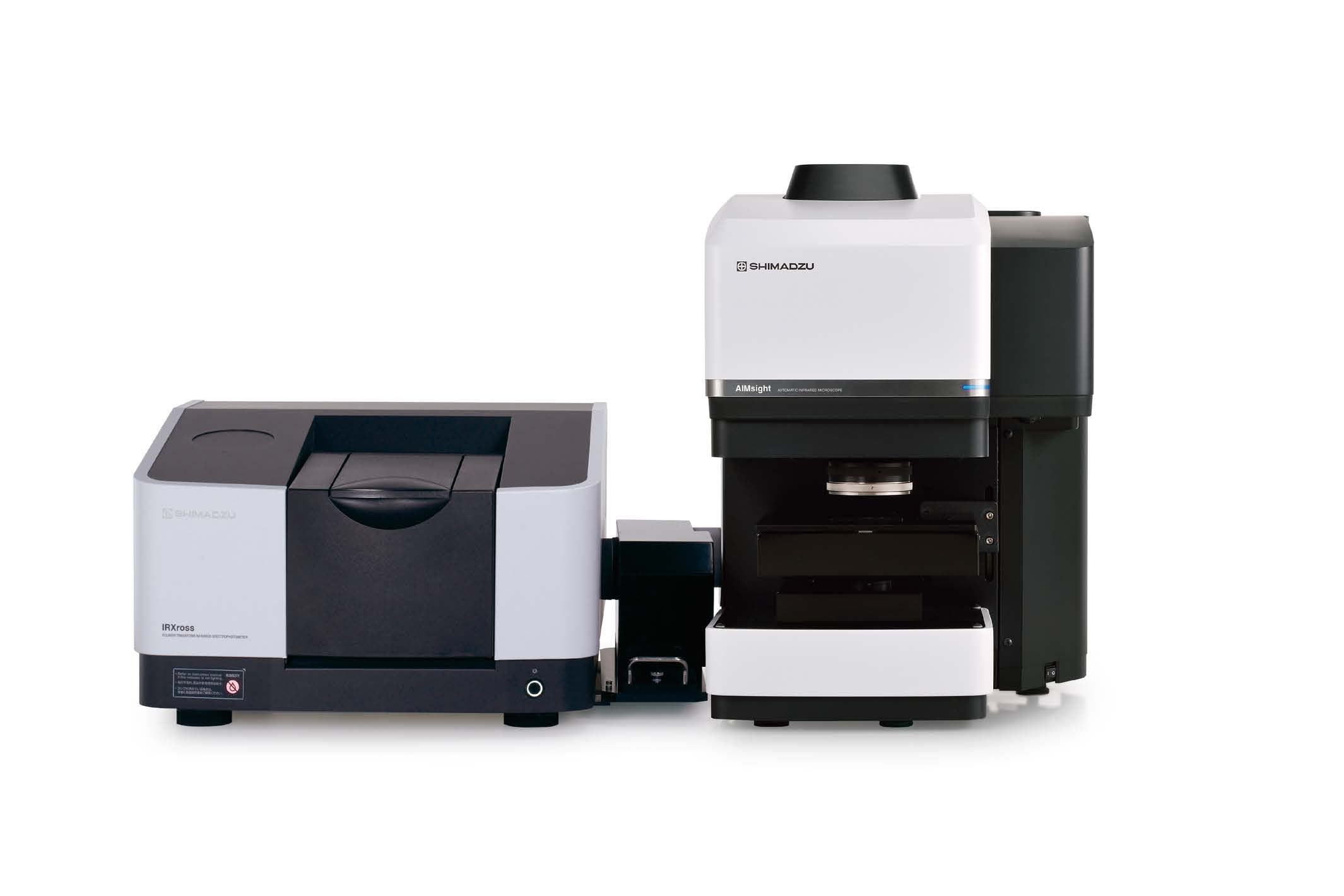
Uncover Hidden Insights with AIMsight FTIR
Infrared Spectroscopy and Raman Spectroscopy

Spectrum of Substance Attached to a Fiber,
Identified as a Phenol-Based Resin
Featuring a cone-type prism, this single-reflection objective mirror results in 15× magnification and a 45-degree mean incident angle. The slide-on type prism makes it easy to switch back and forth between visible observation and infrared measurement modes. The mirror is especially useful for analyzing samples that do not transmit or reflect infrared light easily, such as paper or plastic samples, stains, and other extremely thin areas.



Shimadzu's new proprietary library is especially useful for analyzing contaminants in tap water and foods. The library includes information from actually collected contaminant samples and information about service parts commercially marketed for tap water applications. It also includes a collection of X-ray fluorescence profiles (PDF files). Consequently, it can significantly improve the accuracy of contaminant searches. Unlike previous libraries, this library of mixture information covers the extensive knowl-edge and experience necessary for qualitative analysis.
Unlike previous libraries, this library includes information about plastics that have degraded due to oxidation associated with heat. The library is especially useful for analyzing contaminants, which are commonly degraded.
*1 Spectra were measured and acquired at the Hamamatsu Industrial Research Institute of Shizuoka Prefecture and compiled as a library by Shimadzu Corporation.
Unlike previous libraries, this library includes information about plastics degraded by ultraviolet rays. Because many contaminants are degraded, this library is especially useful for such cases. It is also useful for analyzing microplastics.
*2 Plastics degraded using an Iwasaki Electric super accelerated weathering tester were measured and compiled as a library by Shimadzu Corporation.
The line or area mapping modes can be selected for either infrared or Raman measurements, whereas the depth (line) mapping mode can be selected for Raman measurements*3. The mapping range, measurement interval, and other parameters can be specified directly on the synthesized visual image. For infrared measurements, in addition to typical transmission and reflection mapping modes, an ATR microscope mapping measurement can be selected (which requires an optional ATR objective mirrors and pressure sensor). Using the measurement results, a chemical image can be created based on peak heights/areas, multivariate analysis (PCA/MCR), or similarity to a target spectrum in order to visualize the distribution of components that otherwise cannot be confirmed visually.
*3 Functionality for random mapping of up to 60 points is included as standard.